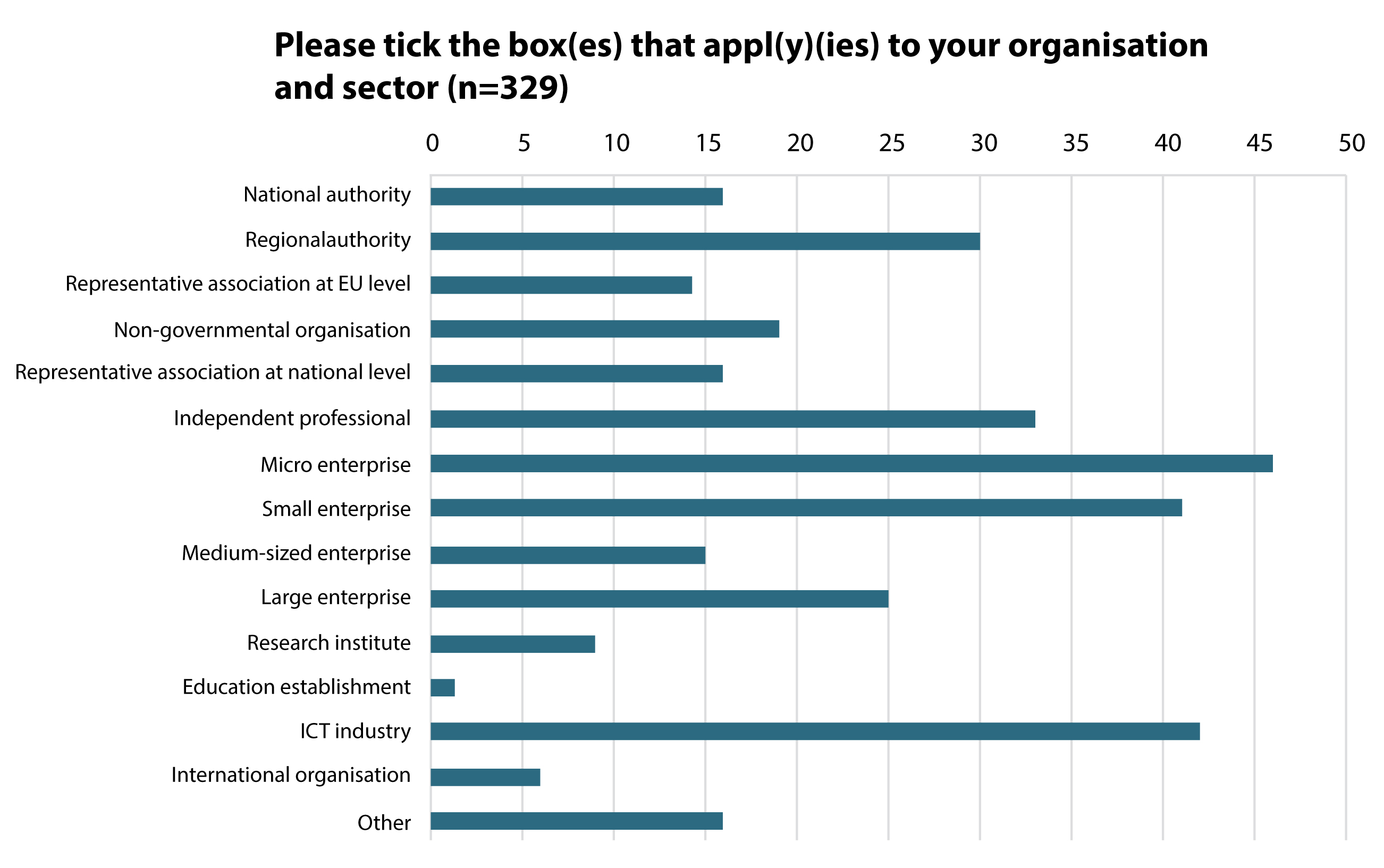“One consultation looked at Europeans’ future needs for Internet speed and quality, the other dealt with the review of the current EU telecoms regulatory framework,” explains Nicolas Gyss, Policy Officer Directorate-General for Communication Networks, Content & Technologies Unit ‘Broadband’. “The purpose of the public consultation on future connectivity needs was to assess and understand those needs better with a view to developing a policy helping the investors to deploy future-proof connectivity networks and to ensure that all users can take advantage of the digital economy and society.”
“The Public consultation on Connectivity Needs gathered a total of 1551 replies (with 1282 respondents replying as individuals, 229 as organisations and 40 not specifying). The participation from different categories of organisations was overall balanced. A full report will be published in the coming weeks, but the EC has shared a number of preliminary trends observed in the public consultation. These results will feed into the design and the implementation of EU policy, regulatory and funding instruments that can contribute to facilitating broadband deployment.”
Preliminary trends from EC public consultation
- There is a perception that the use of Internet services and applications will increase drastically by 2025 compared with today, through both fixed and mobile connectivity.
- Most of the responses show there is a clear need for a substantial improvement in connectivity features in the future.
- While users perceive download speed as the most important feature of fixed connectivity today, other fixed connectivity features will gain significant importance in the future - notably upload speeds, latency, reliability and uninterrupted access.
- Respondents seem less concerned today by specific features of mobile connectivity compared to the attention paid to those related to fixed connectivity. However, mobile connectivity features will become increasingly important in the future.
- Good connectivity is perceived as a necessary condition to achieve the Digital Single Market.
- Many users consider their needs not fully fulfilled. Their trust that sufficient future connectivity will spontaneously emerge at a level of quality and speed which would fulfill their needs is low.
- Many respondents point to the need for policy measures to support the deployment of infrastructure in line with their future needs.
Find out more at ec.europa.eu

Respondents based on organisational activities and sectors (Source: EC)
FTTH Council responds
One of the respondents was the Fibre to the Home Council Europe. President Edgar Aker* shares the Council’s view.
“To us, the European Commission’s goal of having 50% of EU households subscribe to 100 Mb/s or greater by 2020 implies virtually ubiquitous broadband availability (with a 50% take rate). Of course, we feel fibre should remain the end point on the horizon, although the choice of technologies used to reach that end point should be free. We support the EC providing grants to take broadband to rural areas, as long as free competition remains unhindered. We’re very pleased with the direction the EC appears to be taken, especially in the light of recent statement by Commissioner Oettinger, who proposes looking even further than 2020, and beyond Gigabit speeds.”
* Edgar Aker was President of the FTTH Council Europe from April 2015 to April 2016. Ronan Kelly is the new President.
